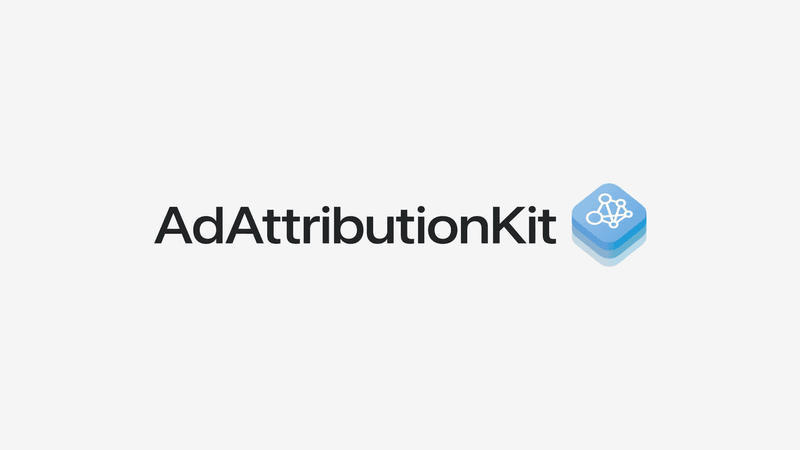AdAttributionKit: What subscription apps need to know
Is this a meaningful successor to SKAdNetwork?

Many of us were expecting Apple to provide updates on SKAdNetwork during WWDC. That didn’t happen. What we did get is the announcement of AdAttributionKit. This new framework promises to enhance how advertisers measure the success of their campaigns while maintaining user privacy.
What does this mean for SKAdNetwork?
In this blog, we’ll give you a rundown of what you need to know about AdAttributionKit based on the preliminary information released.
Understanding AdAttributionKit
AdAttributionKit is designed to help advertisers measure the effectiveness of their ads across multiple channels without compromising user privacy. This framework supports a variety of advertising formats, including static images, videos, audio, and interactive ads, making it versatile for different campaign types. It builds on the fundamentals of SKAdNetwork and introduces new capabilities, such as broader compatibility and re-engagement tracking.
How it works
AdAttributionKit attributes app installations and re-engagements based on two types of interactions: clicks and views. Here’s how each works:
- Click-through attribution: When a user clicks on an ad and installs the app within 30 days, the installation is attributed to that ad.
- View-through attribution: When a user views an ad for a minimum of two seconds and installs the app within 24 hours without clicking a link, the installation is attributed to that view.
AdAttributionKit supports different methods of ad presentation, including custom clickable ads, view-through ads, and recommendations via SKOverlay or SKStoreProductViewController. Custom clickable ads can navigate the user to a marketplace to install the advertised app, view-through ads can be in formats like video, and recommendations can use SKOverlay for banners or SKStoreProductViewController for full-screen presentations.
Postback mechanism
When an app installation occurs, AdAttributionKit sends postbacks to advertisers and developers, providing key attribution information:
- Advertised Item ID: The identifier for the advertised app.
- Conversion type: Indicates whether the installation was a redownload or re-engagement, helping evaluate re-engagement campaigns.
- Publisher Item ID: Identifies the app where the ad was shown.
- Source identifier: Information about the ad campaign provided by the ad network.
- Conversion values: Configurable values representing different types of engagement, such as completing an onboarding tutorial or making a purchase.
What is the difference between AdAttributionKit and SKAdNetwork?
AdAttributionKit builds on the fundamentals of SKAdNetwork but introduces several key enhancements and broader compatibility. Here are the main differences:
- Broader compatibility: AdAttributionKit works with both the Apple App Store and third-party app stores, whereas SKAdNetwork only supports the Apple App Store.
- Re-engagement measurement: AdAttributionKit supports measuring the effectiveness of campaigns for users who have previously installed the app. However, it does not allow for specifically targeting these users, which was previously done using IDFAs. Running specific re-engagement campaigns remains a challenge.
- Postback improvements: AdAttributionKit introduces a new conversion-type field in postbacks, which includes values for download, redownload, and re-engagement. This helps advertisers better evaluate their campaigns.
- Developer mode: AdAttributionKit offers a developer mode to simplify testing and development, providing real-time data and debug information.
- Enhanced fraud prevention: AdAttributionKit includes stricter measures to combat ad fraud, such as requiring ads to be displayed in the foreground and limiting the use of timers to end impressions prematurely.

Re-engagement is a new type of conversion event coming with AdAttributionKit
So what about SKAdNetwork?
You may have noticed that there’s more than a little overlap between AdAttributionKit and SKAdNetwork. While SKAdNetwork won’t be deprecated, it looks likely that it won’t be updated, and that AdAttributionKit is a replacement for SKAdNetwork 5.0.
What can we takeaway from this news?
I asked independent consultant Marcus Burke for his take on the announcement of AdAttributionKit, which sums things up neatly:
“While AdAttributionKit comes with a few welcomed upgrades to SKAN, Apple’s announcements fall short of actually moving the needle for marketers. Re-engagement tracking was announced at last year’s WWDC and we have yet to see meaningful alternative stores. Neither of these updates will push adoption of SKAN by networks and advertisers meaning more investments in solutions like Metas AEM which leverage IPs. It seems that history repeats itself.”
You might also like
- Blog post
Scaling UA without wrecking your conversion rate: A Meta campaign playbook
A structured testing system helped one app lower cost-per-trial while targeting its most profitable users
- Blog post
Gamification in apps: A complete guide to using motivation to drive real value
Why streaks fall short and 11 apps getting gamification right
- Blog post
Apple’s June 2025 EU update: one entitlement, three fees, and CTF’s 2026 sunset
What apps in the EU should do after Apple’s DMA tweak.

